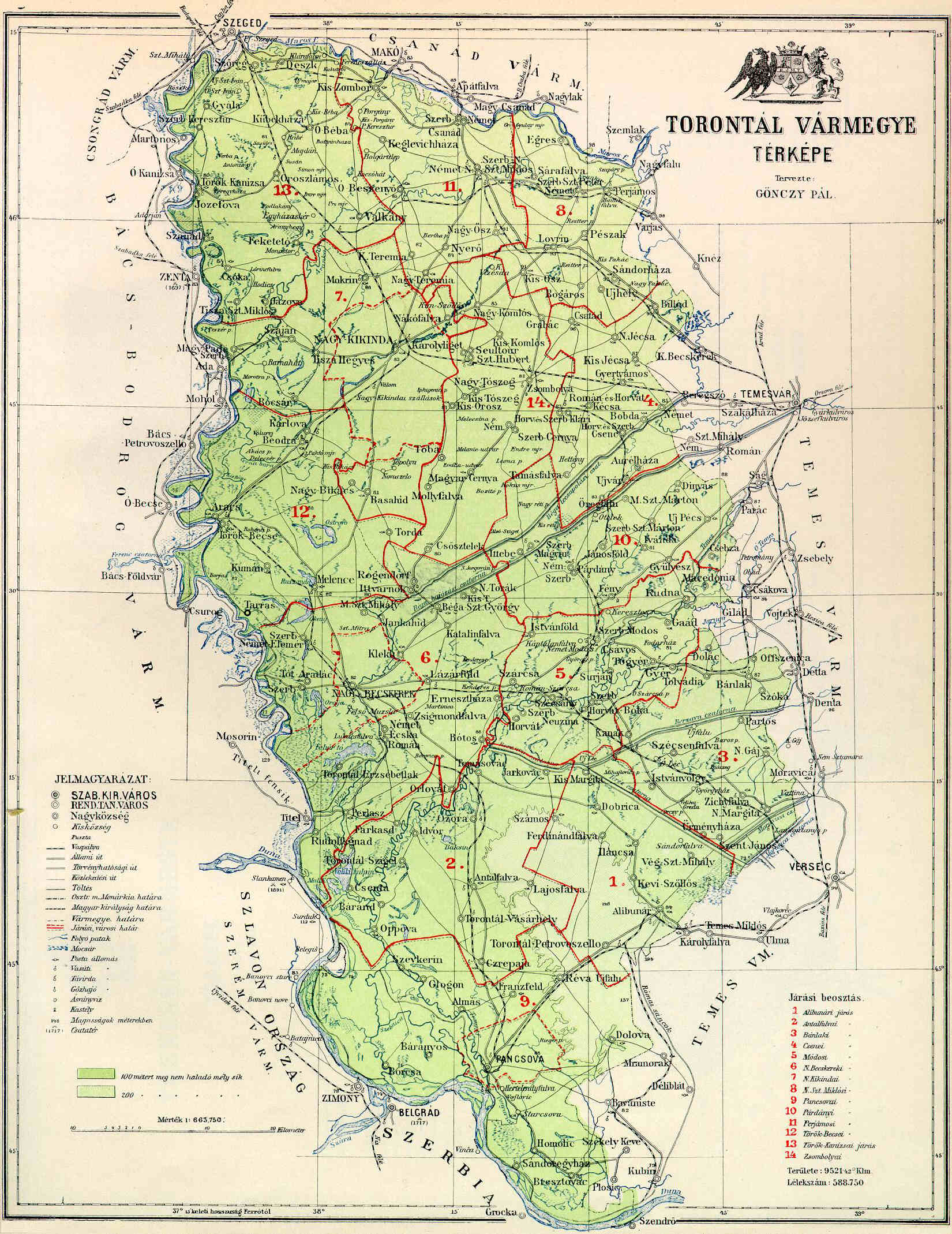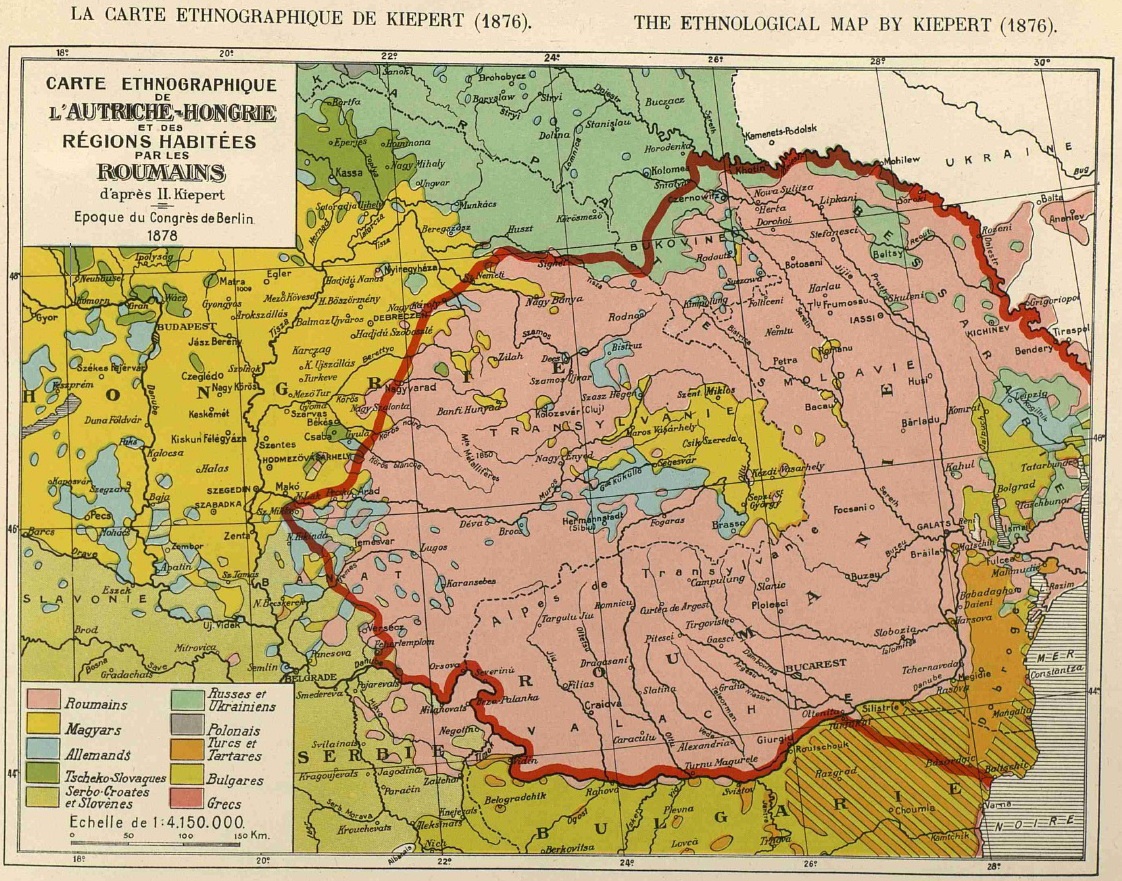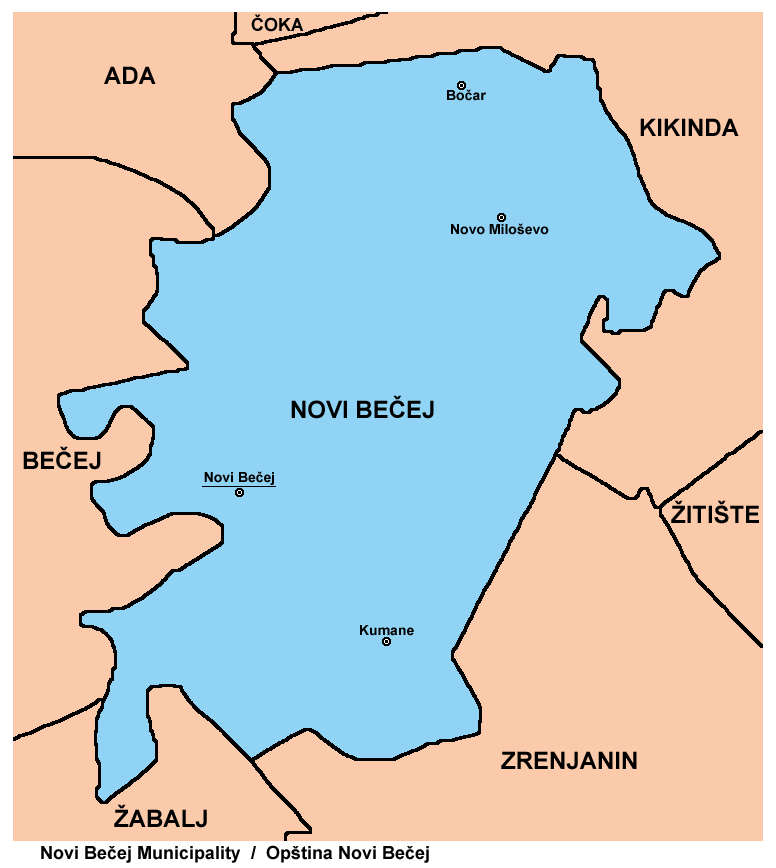|
Central Banat District
The Central Banat District (, ) is one of Administrative districts of Serbia, administrative districts of Serbia. It lies in the geographical region of Banat. According to the 2022 census, the Central Banat District has a population of 157,711 inhabitants. The administrative center is the city of Zrenjanin. Cities and municipalities The Central Banat District encompasses the territories of one city and four municipalities: * Zrenjanin (city) * Novi Bečej (municipality) * Nova Crnja (municipality) * Sečanj (municipality) * Žitište (municipality) Demographics Towns There are two towns with over 10,000 inhabitants. * Zrenjanin: 67,129 * Novi Bečej: 10,967 Ethnic structure See also * Administrative districts of Serbia * Administrative divisions of Serbia * Torontál County References External links * {{Authority control Central Banat District, Geography of Vojvodina Banat Districts of Vojvodina ... [...More Info...] [...Related Items...] OR: [Wikipedia] [Google] [Baidu] |
Administrative Districts Of Serbia
The administrative districts () of Serbia are the country's first-level administrative division. The term '' okrug'' (pl. ''okruzi'') means "circuit" and corresponds (in literal meaning) to in the German language. It can be translated as "county", though it is generally rendered by the government as "district". Prior to a 2006 decree, the administrative districts were named simply districts. The local government reforms of 1992 created 29 districts, with the City of Belgrade having similar status. Following the 2008 Kosovo declaration of independence, the districts created by the UNMIK-Administration were adopted by Kosovo. The Serbian government does not recognize these districts. The administrative districts are generally named after historical and geographical regions, though some, such as the Pčinja District and the Nišava District, are named after local rivers. Their areas and populations vary, ranging from the relatively-small Podunavlje District to the much larger Zl ... [...More Info...] [...Related Items...] OR: [Wikipedia] [Google] [Baidu] |
Nova Crnja
Nova Crnja ( sr-Cyrl, Нова Црња; , ; , ) is a village and municipality located in the Central Banat District of the autonomous province of Vojvodina, Serbia. The village has a population of 1,007, while the municipality has 8,147 inhabitants (2022 census). Inhabited places Nova Crnja municipality includes the following villages: *Nova Crnja * Aleksandrovo * Vojvoda Stepa * Radojevo * Srpska Crnja * Toba (Hungarian: ''Tóba'') Although the village of Nova Crnja is a seat of municipality, the largest of these villages is Srpska Crnja. Before 1961, there was one more village in the municipality, which was abandoned because of groundwater. The name of the village was Molin. Demographics According to the 2011 census, the population of the municipality of Novi Crnja was 10,272 inhabitants. Ethnic groups ;Municipality The population of the Nova Crnja municipality is composed of: *Serbs (67.39%) *Hungarians (17.71%) * Romani (9.89%) *Others and undeclared (5.01%) Pla ... [...More Info...] [...Related Items...] OR: [Wikipedia] [Google] [Baidu] |
Central Banat District
The Central Banat District (, ) is one of Administrative districts of Serbia, administrative districts of Serbia. It lies in the geographical region of Banat. According to the 2022 census, the Central Banat District has a population of 157,711 inhabitants. The administrative center is the city of Zrenjanin. Cities and municipalities The Central Banat District encompasses the territories of one city and four municipalities: * Zrenjanin (city) * Novi Bečej (municipality) * Nova Crnja (municipality) * Sečanj (municipality) * Žitište (municipality) Demographics Towns There are two towns with over 10,000 inhabitants. * Zrenjanin: 67,129 * Novi Bečej: 10,967 Ethnic structure See also * Administrative districts of Serbia * Administrative divisions of Serbia * Torontál County References External links * {{Authority control Central Banat District, Geography of Vojvodina Banat Districts of Vojvodina ... [...More Info...] [...Related Items...] OR: [Wikipedia] [Google] [Baidu] |
Torontál County
Torontál (, , , ) was an administrative county (comitatus) of the Kingdom of Hungary. Its territory is now divided between Serbia and Romania, except for a small area which is part of Hungary. The capital of the county was Nagybecskerek (, , ), the current Zrenjanin. Geography Torontál county was located in the Banat region. From its recreation in 1779 until its partition in 1920 it shared borders with the Hungarian counties of Bács-Bodrog, Csongrád, Csanád, Arad and Temes. The Banat Military Frontier lay along its southern border until it was abolished in 1873, after which the river Danube formed its southern border, which it shared with the Principality of Serbia (Kingdom of Serbia after 1882), and the Slavonian Military Frontier ( Croatian-Slavonian county of Syrmia after 1881). The river Tisza formed its western border and the river Maros (Mureș) its northern border. The rivers Aranca, Bega, Timiș and Bârzava flowed through the county. Its area was aro ... [...More Info...] [...Related Items...] OR: [Wikipedia] [Google] [Baidu] |
Slovaks In Serbia
According to the 2022 census, Slovaks ( sr-Cyrl-Latn, Словаци, Slovaci) in Serbia number 41,730, constituting 0.63% of the country's population. They mainly live in Vojvodina (39,807), where they constitute the third largest ethnic group after Serbs and Hungarians in Serbia, Hungarians. Like other ethnic Slovaks, they speak the Slovak language, but most of them are Protestant (Slovak Evangelical Church of the Augsburg Confession in Serbia, Evangelical-Augsburg Church, a Lutheran Protestant denomination) by faith and not Roman Catholic, unlike most Slovaks in Slovakia. Demographics Most Slovaks live in Kovačica (8,497 Slovaks) and Bački Petrovac (5,773 Slovaks). There are two municipalities in Vojvodina with absolute or relative Slovak majorities: Bački Petrovac (with 66.4% Slovaks) and Kovačica (with 41% Slovaks). The towns of Kovačica and Bački Petrovac are the cultural centres of Slovaks in Vojvodina. Slovak is one of the six official languages of the provincial ... [...More Info...] [...Related Items...] OR: [Wikipedia] [Google] [Baidu] |
Romanians In Serbia
Romanians in Serbia (; ) are a recognized national minority in Serbia. The total number of self-declared Romanians according to the 2022 census was 23,044, while 21,013 people declared themselves Vlachs; there are differing views among some of the Vlachs over whether they should be regarded as Romanians or as members of a distinctive nationality. Declared Romanians are mostly concentrated in Banat, in Vojvodina, while declared Vlachs are mostly concentrated in the Timok Valley, in eastern Serbia. History As Daco-Romanian-speakers, the Vlachs have a connection to Roman heritage in Serbia. An area inhabited with Thracian Tribalians, came under Roman control in 75 BC, when Roman province Moesia was established. Following Roman withdrawal from the province of Dacia at the end of the 3rd century, the name of the Roman region was changed to Dacia Aureliana, and (later Dacia Ripensis) spread over most of what is now called Serbia and Bulgaria. Roman military presence in the region p ... [...More Info...] [...Related Items...] OR: [Wikipedia] [Google] [Baidu] |
Romani People In Serbia
Romani people, or Roma (), are the fourth largest ethnic group in Serbia, numbering 131,936 (1.98%) according to the 2022 census. However, due to a legacy of poor birth registration and some other factors, this official number is likely underestimated. Anywhere between 46,000 to 97,000 Roma are internally displaced from Kosovo after 1999. Another name used for the community is ''Cigani'' ( sr-Cyrl, Цигани), although the term is today considered pejorative and is not officially used in public documents. They are divided into numerous subgroups, with different, although related, Romani dialects and history. Subgroups As there are difficulties with the data collection, historization, and with the questionable familiarity of the Serbian scholars with Roma lives and culture and significant demographic changes and migrations of Roma population, it is difficult to establish one definite division within Roma community. According to the study of scholar Tihomir Đorđević (1 ... [...More Info...] [...Related Items...] OR: [Wikipedia] [Google] [Baidu] |
Hungarians In Serbia
Hungarians in Serbia (; ) are a recognized national minority in Serbia. According to the 2022 census, the population of ethnic Hungarians in Serbia is 184,442, constituting 2.8% of the total population, which makes them the second-largest ethnic group in the country behind Serbs and the largest minority group. The vast majority of them live in the northern autonomous province of Vojvodina, where they number 182,321 and make up 10.5% of the province's population. Almost 99% of all Hungarians in Serbia live in the province of Vojvodina. Most Hungarians in Serbia are Roman Catholics, while smaller numbers of them are Protestant (mostly Calvinist). Their cultural center is located in Subotica (). History Parts of the Vojvodina region were included in the medieval Kingdom of Hungary in the 10th century, and Hungarians then began to settle in the region, which before that time was mostly populated by West Slavs. During the Hungarian administration, Hungarians formed the largest ... [...More Info...] [...Related Items...] OR: [Wikipedia] [Google] [Baidu] |
Serbs In Vojvodina
The Serbs of Vojvodina are the largest ethnic group in this northern province of Serbia. For centuries, Vojvodina was ruled by several European powers, but Vojvodina Serbs never assimilated into cultures of those countries. Thus, they have consistently been a recognized indigenous ethnic minority with its own culture, language and religion. According to the 2022 census, there were 1,190,785 Serbs in Vojvodina or 68.43% of the population of the province. History Early medieval period Before the Roman conquest in the 1st century BC, Celtic tribes inhabited the territory of present-day Vojvodina region. During the Roman rule, the original inhabitants were heavily Romanized. The Slavs ( Severans, Abodrites, Braničevci and Timočani) settled today's Vojvodina during the early medieval migrations. Until the 13th century, the region had a dominant West Slavic and Hungarian population. In the 9th century the region of present-day Vojvodina was ruled by the two local Bulgaro-Slavi ... [...More Info...] [...Related Items...] OR: [Wikipedia] [Google] [Baidu] |
Žitište
Žitište ( sr-Cyrl, Житиште, ; ; ) is a town and municipality located in the Central Banat District of the autonomous province of Vojvodina, Serbia. As of 2022 census, the town itself has a population of 2,550, while Žitište municipality has 13,412 inhabitants. Name In Serbian, the town is known as ''Žitište'' (Cyrillic: Житиште), in Romanian as ''Jitiște'' or ''Zitiște'', in German as ''Sankt Georgen an der Bega'', and in Hungarian as ''Bégaszentgyörgy'' or ''Begaszentgyörgy''. The Serbian name of the town derived from the Serbian word "žito" ("wheat" in English). Its old names used in Serbian were ''Begej Sveti Đurađ'' and ''Senđurađ''. The Hungarian name of the town derived from the Hungarian family name Szentgyörgyi. History Žitište was founded in the 14th century during the administration of the medieval Kingdom of Hungary, under the name of Zenthgyurgh (Szentgyörgyi). In 1660/1666, it was called Senđurađ, which was recorded as a set ... [...More Info...] [...Related Items...] OR: [Wikipedia] [Google] [Baidu] |
Sečanj
Sečanj (, ) is a town located in the Central Banat District of the autonomous province of Vojvodina, Serbia. As of 2022 census, the town itself had a population of 1,889, while the Sečanj municipality has 10,544 inhabitants. Name "Sečanj" is a Slavic calendar, Slavic name for the first month in the calendar year. The Serbian Ekavian variant of this name was eventually replaced with the Latin-derived "Januar", while the Croatian Ijekavian variant "Siječanj" remains in use in Croatia. In Serbian language, Serbian and Croatian language, Croatian, the town is known as ''Sečanj'' (Сечањ), in Hungarian language, Hungarian as ''Szécsány'' or ''Torontálszécsány'', in German language, German as ''Setschan'' or ''Petersheim'', and in Romanian language, Romanian as ''Seceani''. Serbian, Hungarian, and Romanian language are officially used by municipal authorities. Demographics According to the 2011 census, the population of the municipality of Sečanj was 13,267 inhabitan ... [...More Info...] [...Related Items...] OR: [Wikipedia] [Google] [Baidu] |
Novi Bečej
Novi Bečej (, ) is a town and municipality located in the Central Banat District of the autonomous province of Vojvodina, Serbia. The town has a population of 10,967, while Novi Bečej municipality has 19,886 inhabitants (2022 census). Name Novi Bečej means "New Bečej". In the past it was known as ''Turski Bečej'' ( sr-cyrl, Турски Бечеј, "Turkish Bečej"), while the current town of Bečej, across the river Tisa (in the Bačka region) was in the past known as ''Stari Bečej'' (Serbian Cyrillic: , "Old Bečej"). There are several theories about town's name origin. The first one is that it derives from ''Castellum de Beche'', which was the name of the fort located near today's town center. The other theory is that the name was given after the family Wechey, which used to rule the settlement and the land around modern-day Novi Bečej. The town was also known as ''Turski Bečej'' (Турски Бечеј). In 1919 it was renamed ''Novi Bečej'' (Нови Беч ... [...More Info...] [...Related Items...] OR: [Wikipedia] [Google] [Baidu] |







